The Asus ZenFone 7 Pro is Asus’s latest flagship smartphone and comes with the same unusual camera concept as its predecessor, the ZenFone 6: instead of two camera modules—one on the front and another on the back—the device features a single module that can rotate to point away from or toward the photographer.
This not only eliminates the requirement for a “camera notch” in the display, but also means that the same camera hardware can be used to capture standard pictures and self-portraits. While this hardware on the ZenFone 6 consisted of a dual-camera setup, the new model features three individual cameras: a primary camera with a 64 MP Quad-Bayer sensor, a 12 MP ultra-wide with an 16.6 mm focal length, and an 8MP tele that offers an 80 mm focal length (our Selfie tests cover only the primary camera, though). Imaging parameters are modified depending on which direction the camera is pointed.
Other specs include a top-end Qualcomm Snapdragon 865+ chipset, a Super-AMOLED display with FHD+ resolution, and a beefy 5000 mAh battery. Read our full review to find out how the Asus ZenFone 7 Pro fared in our DXOMARK Selfie tests.
Key front camera specifications:
- Rotating triple-camera
- Primary 64 MP 1/1.72″ sensor, f/1.8-aperture lens with 26 mm-equivalent focal length, PDAF
- Ultra-wide: 12 MP 1/2.55″ sensor, f/2.2-aperture lens with 16.6 mm-equivalent focal length, PDAF
- Tele: 8 MP sensor, f/2.4-aperture lens with 80 mm-equivalent focal length, PDAF
- 4320p video at 30 frames per second (8K) (tested at 4K/30 fps)
- Dual-LED flash
- Qualcomm Snapdragon 865+ chipset
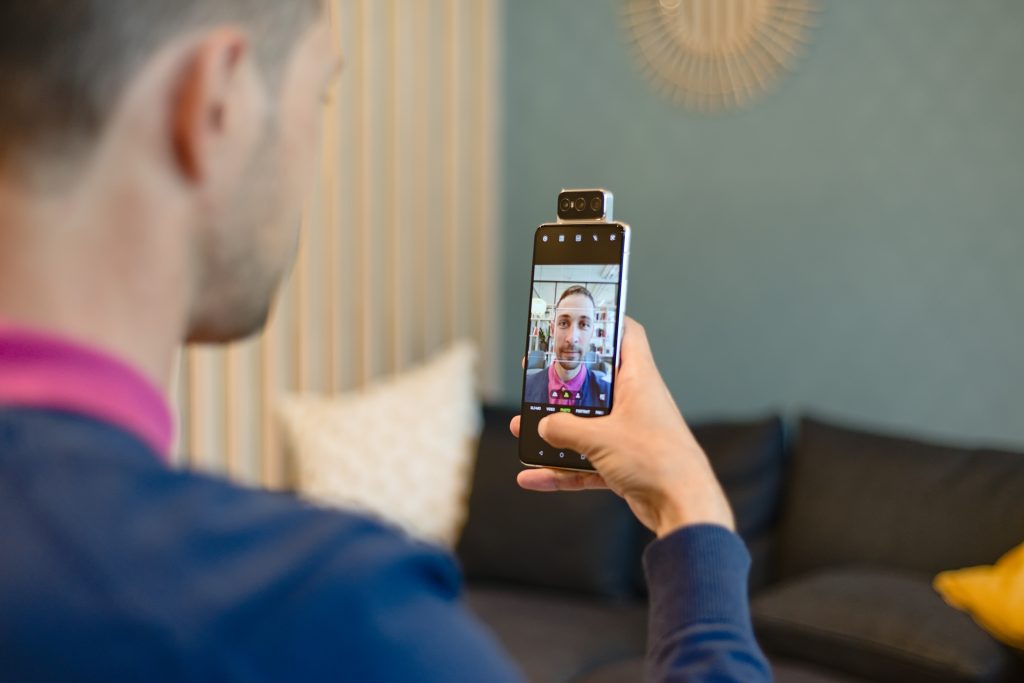
About DXOMARK Selfie tests: For scoring and analysis in our smartphone front camera reviews, DXOMARK engineers capture and evaluate over 1500 test images and more than 2 hours of video both in controlled lab environments and in natural indoor and outdoor scenes, using the camera’s default settings. This article is designed to highlight the most important results of our testing. For more information about the DXOMARK Selfie test protocol, click here.
Test summary


Like on its predecessor ZenFone 6, the ZenFone 7 Pro’s unconventional swivel camera setup makes for great selfie performance, and with an overall score of 101, the device manages to land in the number two spot in our DXOMARK Selfie ranking, just behind the Huawei P40 Pro. It’s actually the new top device for Video at 96 points and among the best for Photo at 104.
The new ZenFone gets all the basics right for still images, with good exposure in all light conditions, wide dynamic range, and accurate colors with nice skin tones. The camera’s large image sensor helps capture excellent detail and texture for a front camera. Image noise is very well under control on the subject’s face and only visible in the background of a scene. Our testers also liked the background-blurring bokeh mode, which creates a natural effect, nicely isolating the subject in the front from the rest of the scene.
Thanks to the Asus’s autofocus system, subjects at the front are always nicely focused at any shooting distance, from closeup to selfie-stick shooting. This said, while the large image sensor contributes to a good texture/noise tradeoff, it also has a focus-related downside: depth of field is more limited than on cameras with smaller sensors. In practice this means that subjects at the back of a group selfie will be slightly out of focus, as will be monuments or tourist sites in the background of a travel selfie.
Another point of criticism is a slightly unnatural rendering of skin texture. Under close inspection, detail looks a little oversharpened and too contrasty. Some competitors do a better job in this respect, creating a more natural look.
As mentioned above, the ZenFone 7 Pro is the new number one for Selfie Video, thanks to excellent texture and detail rendering, and good exposure down to very low light levels, where many other front cameras struggle. Like for still images, the Asus captures natural skin tones and generally nice colors in video mode, and there’s very little image noise visible on faces.
The camera hasn’t really got any glaring weaknesses in terms of video capture, but the limited depth of field produces the same background-blurring effect for video clips as it does for still images, and while the stabilization system works well overall, it could be a bit better at stabilizing walking motion. Overall, though, the Asus ZenFone 7 Pro is a top choice for selfie video capture.
Photo scores explained
With 104 points, the Asus ZenFone 7 Pro achieves the currently third-highest Photo score in our database. It’s on the same level as the Samsung Galaxy S20 Ultra and only the Huawei P40 Pro and nova 6 5G have higher Photo scores to their name. We calculate the Photo score from results and analyses of tests that examine different aspects of a device’s still-image performance under different lighting conditions. In this section, we’ll take a closer look at these image quality sub-scores, analyzing some aspects of the Asus ZenFone 7 Pro versus its key competition.

Exposure and Contrast
Asus ZenFone 7 Pro
87
91
The ZenFone 7 Pro does generally well in this category. Target exposure tends to be accurate in all light conditions down to low light and the camera offers a wide dynamic range, preserving a lot of highlight and shadow detail in difficult HDR scenes. In addition, exposure is usually stable across a series of shots.
In this comparison below, the Asus records slightly brighter skin tones than the competition, capturing an overall very pleasant image. Exposure is good on all three devices, but the ZenFone 7 Pro looks just a touch nicer than the others.
Occasionally exposure on the subject can be a touch low, though, like in this scene below. Overall exposure is good, with good dynamic range, but ideally the ZenFone 7 Pro would render the subject a touch brighter.

Color
Asus ZenFone 7 Pro
99
105
The ZenFone 7 Pro is capable of producing nice skin tones and overall pleasant colors, especially in bright outdoor light. We’ve seen some slightly unnatural skin tone rendering under indoor illumination and in low light, though. On the plus side, the auto white balance system works correctly and color shading is well controlled in all conditions.
In this image below, the Asus renders the most natural skin tones. The subject’s face is a touch too orange in the S20 Ultra image and the Huawei shot could do with a touch more saturation. In the Asus image, the blue sky could be more blue, though, something that we’ve seen happen in HDR shots quite frequently.
In this shot below, shadows in the skin tones are also a bit too bright, but skin tones are overall rendered accurately. In comparison, the Samsung has quite a noticeable orange/pink cast and the Huawei is also slightly too warm.

Focus
Asus ZenFone 7 Pro
67
97
Thanks to its autofocus system, the ZenFone 7 Pro nails the focus at pretty much all subject distances and in all light conditions, making it a good choice for selfie shooters who are partial to closeup shots or who like to work with a selfie stick or other type of extension.

Its good performance is confirmed by the lab measurements plotted in the graph below:
It’s not all perfect in terms of focus, though. As we mentioned above, the Asus’s swiveling camera unit uses a bigger image sensor than most dedicated selfie cameras, which means the Zenfone 7 Pro has a narrower depth of field than many of its rivals, resulting in slightly blurry backgrounds, including slightly blurry subjects at the back of group shots.

Texture
Asus ZenFone 7 Pro
79
85

Noise
Asus ZenFone 7 Pro
82
90
Texture and noise is an area where the ZenFone’s big sensor is a real advantage. The level of recorded detail is good at all shooting distances in bright light and under indoor illumination. Only in low light is some fine detail lost. Noise is well controlled on the subject’s face but is often visible in the background.
On the downside, texture can look a little oversharpened and contrasty under close inspection, which can result in a slightly unnatural-looking rendering.
In the texture comparison graph below, you can see that the Asus is ahead of the competition in bright light but loses some ground in dim indoor lighting conditions. But below 20 lux, texture measurements actually increase again, causing a dip in the curve, because at that point a frame-stacking night mode kicks in by default.
In this image the Asus deals very well with the contrast between skin tones and delivers very good texture. Both the Samsung and Huawei images are visibly softer with less fine detail.
In the image below, the Zenfone 7 Pro deals with noise on the face well, but some noise is visible on the background, albeit at a level that most users will probably be able to live with. The Samsung and Huawei images are a touch cleaner, but the difference overall is small.
Noise measurements in the lab confirm that the ZenFone 7 Pro controls noise very well across all light levels.
Artifacts is one of the few areas in which the ZenFone 7 Pro’s score is a little lower than direct competitors. This is mainly due to unnatural skin rendering in all conditions. Skin texture looks oversharpened under close inspection, and there’s also some ringing. We also observed some loss of texture on faces in some low-light images, which is likely caused by the night mode’s multi-frame stacking. Other artifacts include a hue shift in high-contrast conditions and some distortion, but these are comparatively well under control.

Flash
Asus ZenFone 7 Pro
91
93
In flash mode, the Asus ZenFone 7 Pro makes use of the LED flash on its swiveling camera module and does not have to rely on a display flash like most selfie cameras. As a result, the Asus can achieve good exposures in low ambient light, with natural skin tones and well-controlled vignetting. White balance can be a little unstable in mixed-light situations, though.
With the flash activated, the camera also activates its night mode at light levels below 20 lux, which can result in the same loss of texture on the face as in flash-off shooting.

Bokeh
Asus ZenFone 7 Pro
70
75
The Asus ZenFone 7 Pro achieves a good score for bokeh, thanks to an overall pleasing and natural-looking background-blurring effect, along with good subject isolation and decent texture rendering. We’ve noticed some variation in the strength of the bokeh effect across multiple shots, though.
Video scores explained
The Asus ZenFone 7 Pro front camera achieves a Video score of 96 points, improving over the Huawei P40 Pro and the Galaxy S20 Ultra by one point and thus taking the top spot in our Selfie Video ranking. Its Video sub-scores are as follows: Exposure (77), Color (87), Focus (68), Texture (95), Noise (82), Artifacts (86), and Stabilization (76).
The Asus is capable of recording 8K video but its sweet spot, where video image quality is best overall, is at 4K/ 30 fps. Exposure on video clips is accurate down to very light levels of approximately 5 lux where it starts dropping off. This chart shows that in terms of low light video exposure the ZenFone 7 Pro is ahead of both the P40 Pro and the Samsung Galaxy S20 Ultra.
Dynamic range is good as well, but on a similar level as the direct competition. In addition exposure convergence in changing light conditions is not too fast nor too slow and without any stepping, making for smooth adaptation.
Colors are nice when recording in bright outdoor light or in indoor conditions and the Asus is among the best in terms of video texture. Levels of detail are high at all light levels; and even though the measurements at typical indoor light levels seem to give the S20 Ultra a slight edge over the Asus, our perceptual analysis revealed that Asus offers a slightly better level of detail for indoor conditions than its competitors.
Like for still images, noise is generally well controlled on the face but can be visible in the background of the scene. In our lab measurements the ZenFone’s noise levels were very low in bright light but a touch higher than the competition in low light conditions.
Artifacts in video mode are generally well under control, but some tone compression can be noticeable in backlit scenes, and like for still images, we have seen hue shifts around clipped areas in blue skies or on skin tones.
The autofocus system works well in video mode, keeping the subject in focus at almost all times. However, the sensor/lens combination’s limited depth of field has the same effect as in photo mode: people in the back of group selfies or tourist sites in the background will be more out of focus than on most direct competitors with a smaller image sensor in the front camera.
For video stabilization, Asus has chosen a similar approach as Huawei on the P40 Pro and Samsung on the S20 Ultra, stabilizing the background of the scene rather than the subject. The system works well and is among the best we have seen. Still, some motion is still visible and there’s also some variation in sharpness between frames. But video stabilization is in line overall with the high-end competition, though.
Conclusion
The Asus ZenFone 7 Pro’s unique swiveling camera unit means the same sensor and lens are used for capturing rear camera and selfie images. The concept really works out well, with the Asus delivering excellent results in many Selfie test categories, especially texture and exposure for both Photo and Video. The only real downside of using a comparatively large image sensor for selfie capture is a narrow depth of field and therefore slightly blurred backgrounds in holiday or group selfies. Most users will be willing to accept this, though, and overall the ZenFone 7 Pro is an easy recommendation to any selfie shooter, especially vloggers and others who frequently record selfie video clips.
Photo
Pros
- Generally accurate white balance and nice skin tones
- Good target exposure and wide dynamic range in most conditions
- Good detail in most conditions
- Accurate depth estimation in bokeh mode
Cons
- Limited depth of field and occasional focus failures
- Unnatural skin rendering
- Image noise in the background
- Occasionally unstable bokeh effect
Video
Pros
- Nice colors when recording in bright light and indoor conditions
- Good exposure on faces down to low light
- Noise on faces well under control in bright light and indoors
- Good detail and texture/noise tradeoff
Cons
- Limited depth of field and focus instabilities
- Stabilization system could be more effective when walking
- Noise
- Artifacts, including color quantization, tone compression, and hue shift


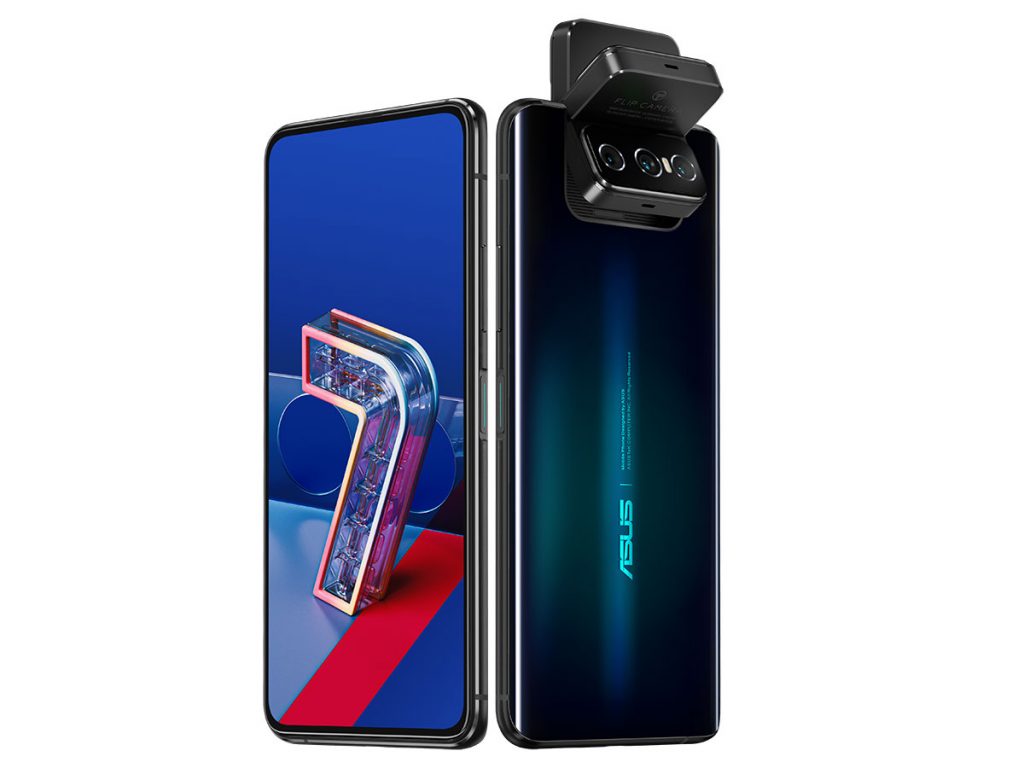
















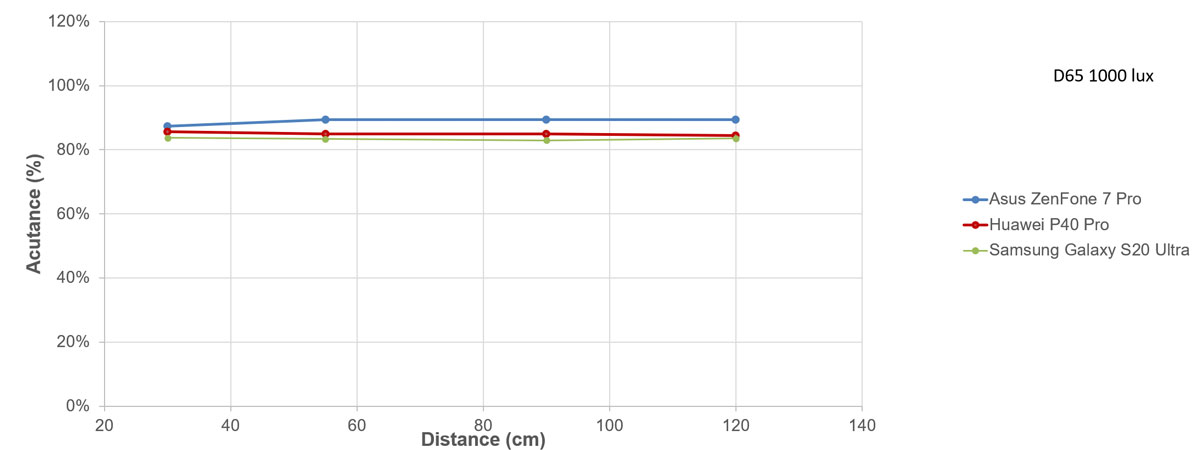



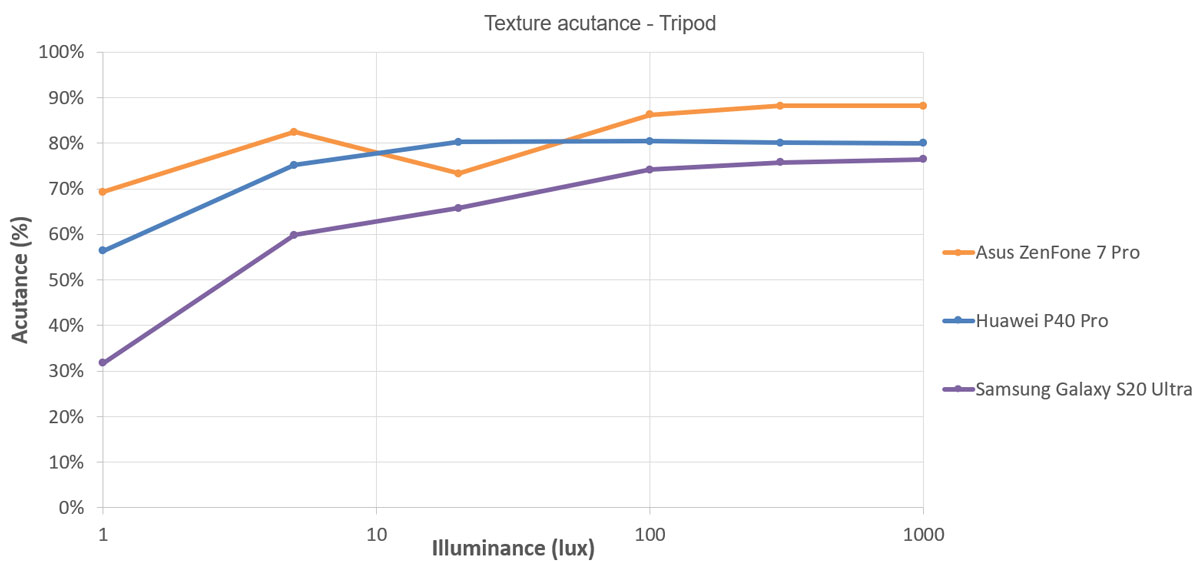




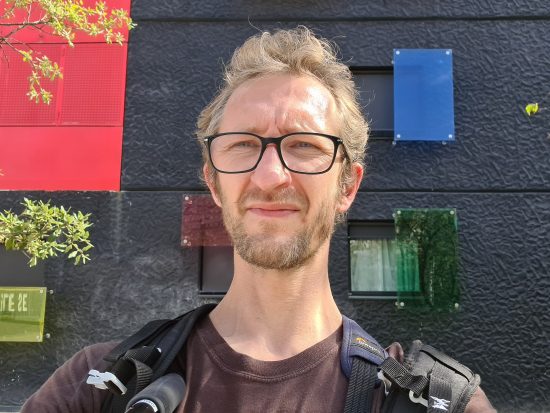
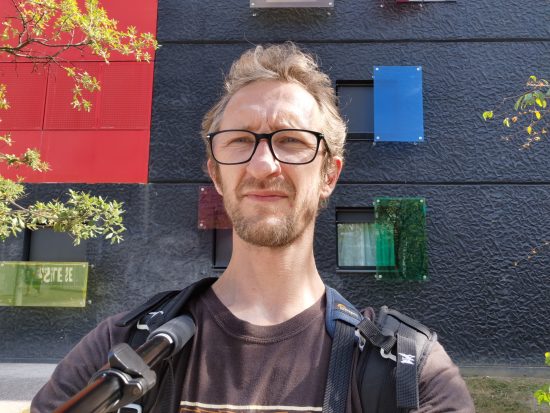
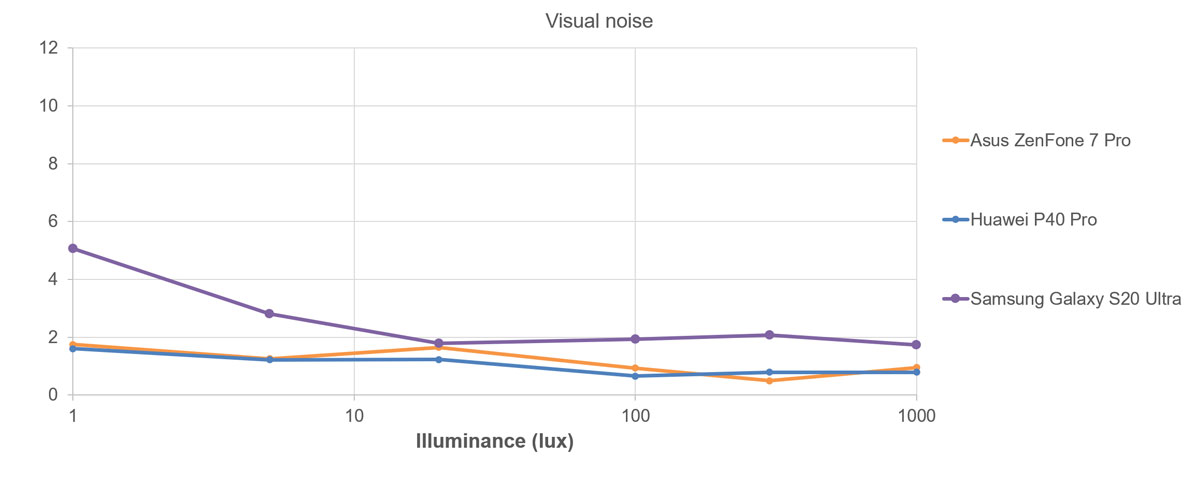


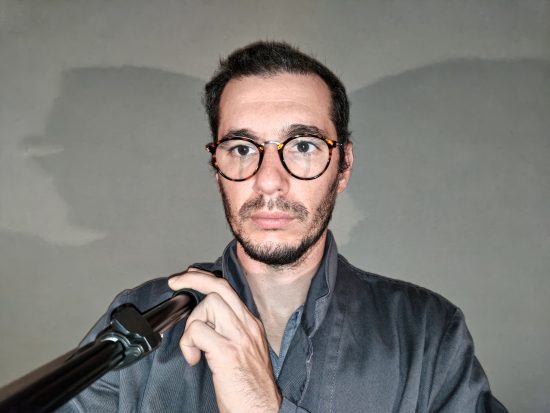





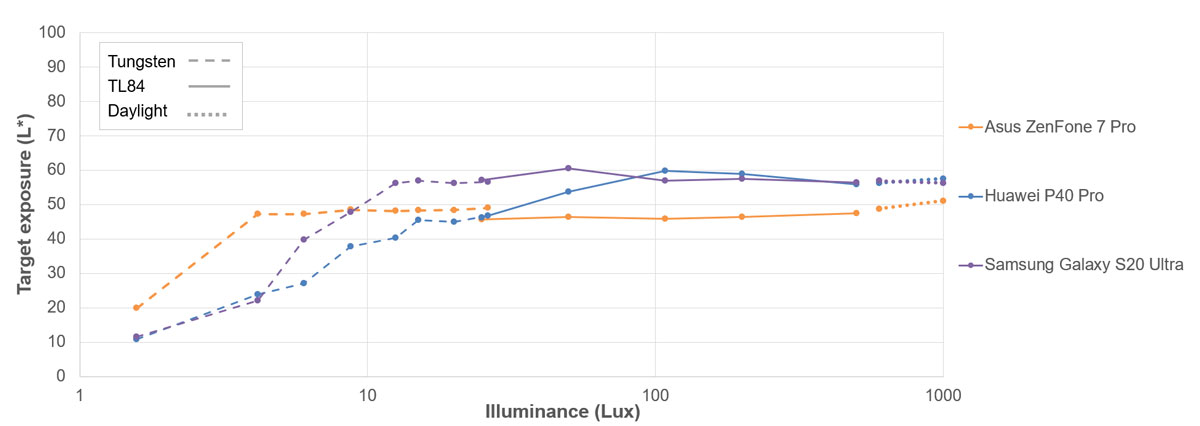
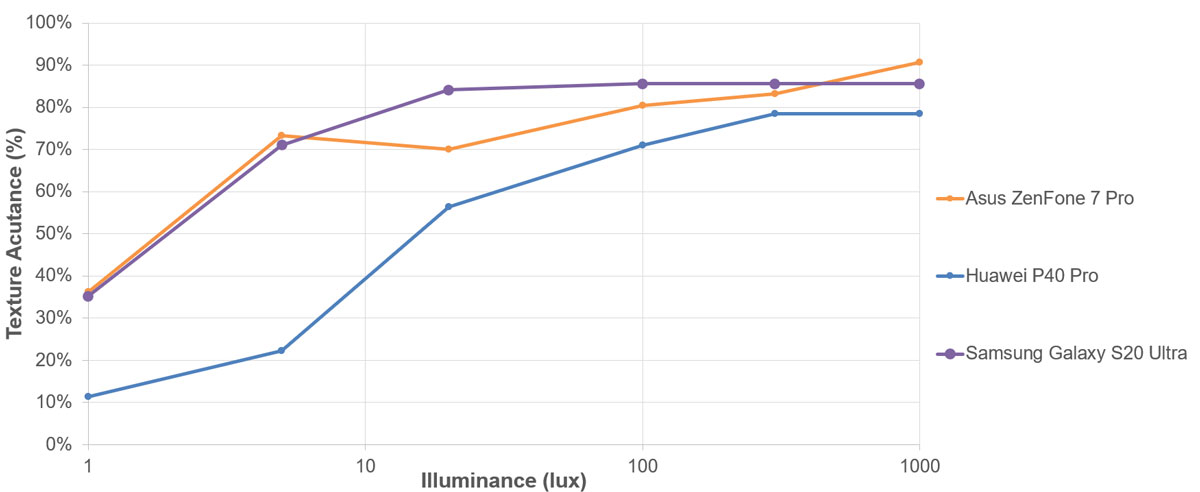
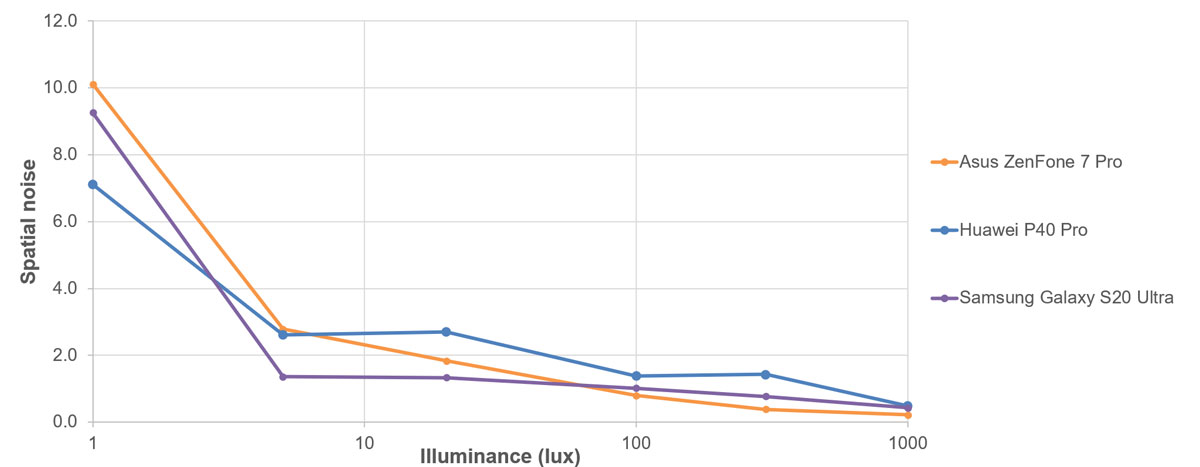
DXOMARK encourages its readers to share comments on the articles. To read or post comments, Disqus cookies are required. Change your Cookies Preferences and read more about our Comment Policy.